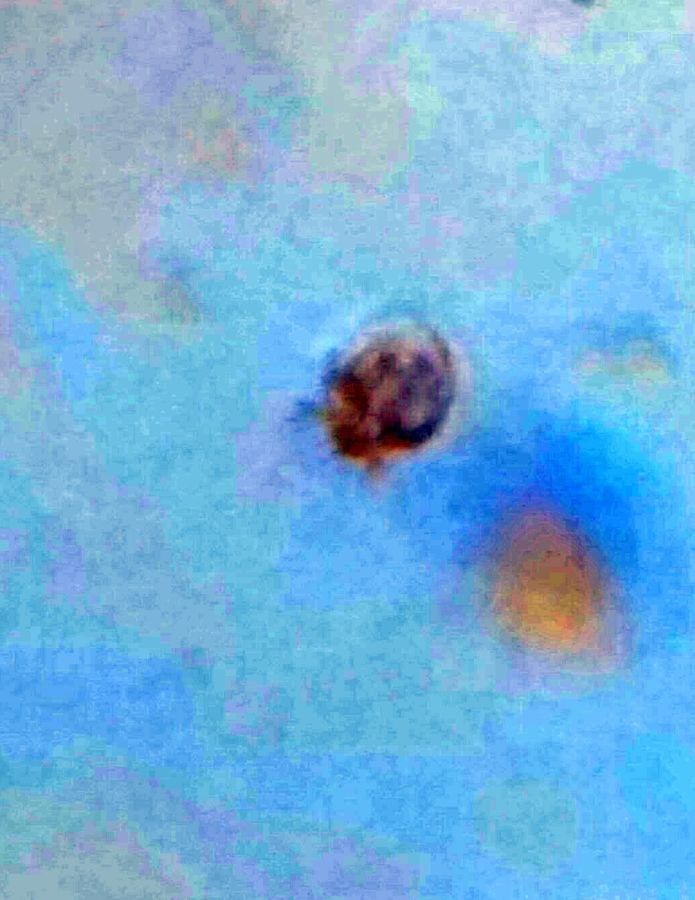Day27: Saltatory Halteria
 Nov 10, 2015 • 2:41 PM UTC
Nov 10, 2015 • 2:41 PM UTC Unknown Location
Unknown Location 140x Magnification
140x Magnification Microorganisms
Microorganisms
laksiyer
Human observer of life. https://sukshmadarshin.wordpress.com
97posts
1255comments
5locations

The pond water continues to do pretty well in my bottle with rotifers, daphnias and flatworms in a nice equilibrium, suggesting that the water is still not depleted of dissolved oxygen. The population dynamic is really interesting and I wish I could count each of these animals as they increase or decrease in number. Perhaps one could do this with some statistics. I shall in the future post on how to collect and maintain a pond water sample, but for now, let me share the delightful saltatory Halteria.
10. Halteria ( Alveolate->Ciliophora->Spirotrichea numbering reflects species observed in the pond water sample under a Foldscope) are members of the Spirotrichs like Ciliates, to which also belong the formidable Euplotes that I observed on Day 1 . They have an unusual saltatory motion where they jump several body lengths abruptly. There is a study that suggests that in some species, this helps them escape being eaten by the rotife r. Now, some rotifer species, such as Polyarthra, have saltatory motion too, perhaps to escape predators like fish? I recorded one such under my compound microscope recently from the same pond water ( Click here ). Hoping it will come into my foldscope some day.
Here are a few saltations of Halteria.
10. Halteria ( Alveolate->Ciliophora->Spirotrichea numbering reflects species observed in the pond water sample under a Foldscope) are members of the Spirotrichs like Ciliates, to which also belong the formidable Euplotes that I observed on Day 1 . They have an unusual saltatory motion where they jump several body lengths abruptly. There is a study that suggests that in some species, this helps them escape being eaten by the rotife r. Now, some rotifer species, such as Polyarthra, have saltatory motion too, perhaps to escape predators like fish? I recorded one such under my compound microscope recently from the same pond water ( Click here ). Hoping it will come into my foldscope some day.
Here are a few saltations of Halteria.
The Halteria is about 30 microns in diameter. It seems to saltate anywhere from to 2-7 body lengths. I tried to slow one such jump down and you can further slow it down in youtube. One thing is that so far I think I see it jump in the direction opposite to its oral apparatus. Apparently, the middle part of the protist has cilia that help it jump these enormous distances, somewhat like a pole vault. I am hoping to study this more carefully.
What fascinates me is the exploration of ideas by ciliates. We saw on day 1 that euplotes uses cilia to walk like feet, now we see that Halteria can abruptly move just like another rotifer.
What fascinates me is the exploration of ideas by ciliates. We saw on day 1 that euplotes uses cilia to walk like feet, now we see that Halteria can abruptly move just like another rotifer.
Sign in to commentNobody has commented yet... Share your thoughts with the author and start the discussion!

 0 Applause
0 Applause 0 Comments
0 Comments_300x300.jpeg)

















